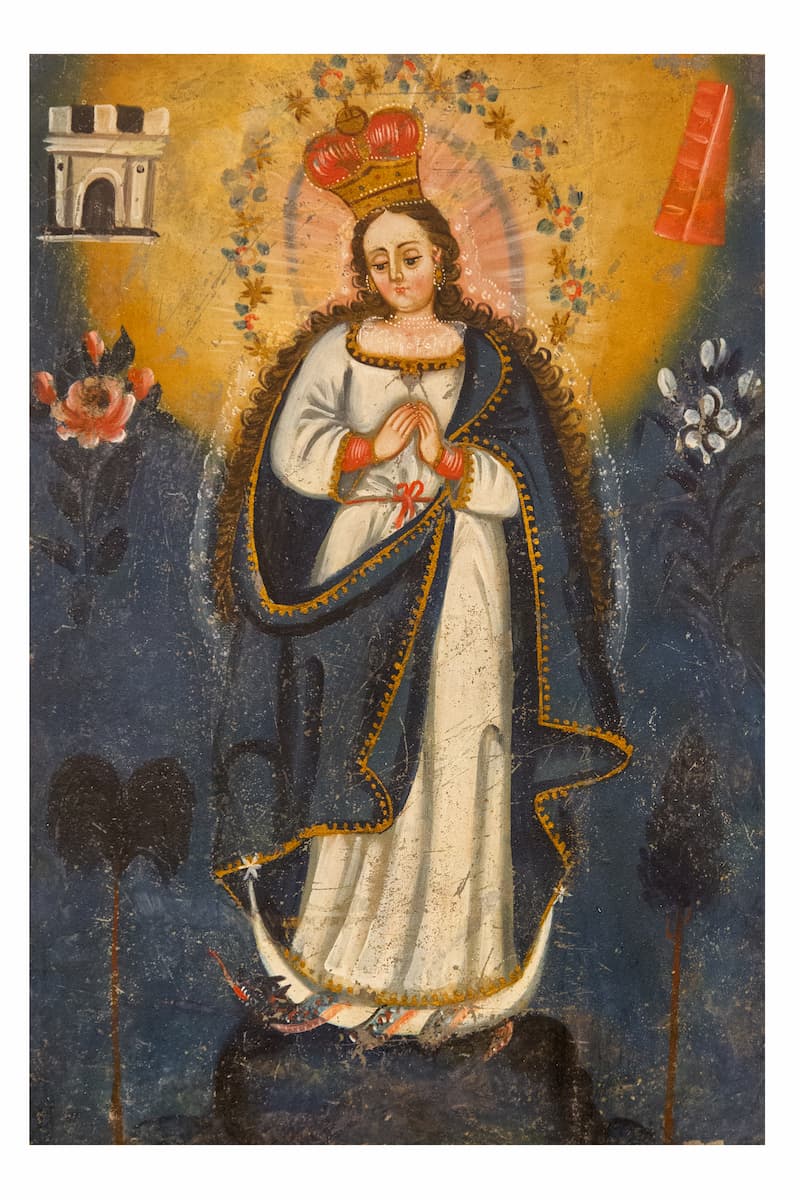Led by curator and antique dealer Marcelo de Medeiros, the guided tour will introduce the works in the exhibition and explore them conceptually. The exhibition brings a cut of the production of religious painting centered in part of Upper Peru, today bolivia, and also sculptures of saints produced in São Paulo; both dating from the. XIX
newly opened (26/11), to shows Devotional Art in the 19th Century: Painting on metal and Paulistinhas guided tour this Saturday, 03 of december, at 11:30, conducted by curator and antique dealer Marcelo de Medeiros, also owner of the exhibited collection (Paulistinhas and painting on metal). The exhibition remains on display until 23 of december, closing this year's season in Arte132 Galeria. The guided tour will last on average 1 hour.
The exhibited works illustrate the cult of religiosity through two peculiar artistic contexts: on the first axis, small-format sculptures of different saints are presented, called “Paulistinhas”. These small figurines were made by hand., by different artisans, under the handling of clay fired in a hollow base, and were carried out exclusively in the state of São Paulo. The aforementioned pieces, that lasted for more than 100 years, will be displayed in the gallery alongside small sacred paintings, carried out in Upper Peru (current Bolivia) by masters from different locations throughout the 19th century, that configures the second axis and context of the exhibition.
The imaginary of São Paulo in the 20th century. XIX
The images of paulistinhas allude to the saints who inhabit the Catholic Christian imaginary. Marcelo de Medeiros, Curator of the exhibition, explains that “the paulistinhas met the demand that came with the increase in population, bringing the possibility for the people to have a holy card of your devotion indoors; a religious art that distinguished itself mainly by being accessible, as well as Bolivian sacred paintings, not found in churches, were destined for the domestic environment”.
In General, estes santinhos were made in small sculptures – between 10 and 20 cm tall –, and, despite the strong influence of the imaginary Portuguese, were unique because of the simplicity of the features and the clay structure. There was greater formal freedom of composition, who usually had a strong aesthetic and poetic sense. The images most executed by artists and craftsmen – known at the time as “santeiros” – were those of Nossa Senhora da Conceição, Jesus Christ, Santo Antônio, St. Joseph, Saint Sebastian, Our Lady of Sorrows, Sant'Ana, Saint Peter and Saint Gertrude.
On this first axis, this is art that is part of the history of São Paulo, without national parallels in the period.
From evangelization to devotion: art on metal I don't know. XIX
With the conquest of Peru by the Spaniards in 1532, immediately it became necessary to manufacture religious goods both for the cult to which the Europeans attended and for the evangelization of the natives.
For both, came to this new land executors of the most varied trades, with clear emphasis on the painters, who, mostly, were from Spain, Italy, Flanders and other locations.
These masters came with the task of illustrating, in the most varied pictorial techniques and materials, the evangelizing plans of the Catholic Church that, associated with the kings of Spain, their goal was to convert the Gentiles, saving the souls of the colonized for the benefit of Holy Mother Church and the Catholic Monarchs.
Painting begins in the 16th century, remains austere in the 17th century and gains its own identity in the 18th century, when receiving indigenous attributes merged with European standards.
This panorama begins to change radically from the first decades of the 19th century onwards., largely due to the air coming from the American and French revolutions.
Sign up to receive Event News
and the Universe of Arts first!
The independence wars of the Spanish-American countries, allied to the population increase of that region, further intensify the search for religious goods.
arise like this, already in the middle of the 19th century, the ideal conditions for the production of a popular religious painting, centered on part of Upper Peru, today bolivia.
At this time, no longer evangelizing but devotional, these little chicks, mostly made of zinc sheet, they are happy in their coloring, naive in their abundance, fun in your entries and direct in your message. They are special for the very peculiar way of treating the themes, which were mostly relatively simple, as variations of the Virgins of Mount Carmel, Rosary, Guadalupe, Sponsorship of Tarata, Socavon and Saint Anthony, Santa Barbara, San Francisco, variations of Jesus Christ and so on.
Mainly found at popular markets in Potosí, Sucre, Cochabamba and La Paz, these artistic testimonies that occupied the villas enchanted and still enchant for their grace, spontaneity and perseverance of faith.
About Art132 Gallery
Arte132 believes that the art of a country, and of a period, is not just made up of a few names defined by the market, but for all artists who developed an understanding of the world and man at a given time, artists who opened and widened the paths of Brazilian art. In this way, exhibits and supports exhibitions committed to presenting relevant and quality art to as many people as possible, collectors or not. At home (designed by architect Fernando Malheiros de Miranda, in 1972), beyond an art gallery, it is a meeting place, dialogues and discoveries.
Service
devotional art: Painting on metal and Paulistinhas
Guided tour with the curator: 03 of december, Saturday, from 11:30 am to 12:30 pm
Curator: Marcelo de Medeiros
Local: Arte132 Galeria – Av. Chase, 132, Moema, São Paulo – SP
Exhibition period: 26 November to 23 th December 2022
Visitation schedules: Monday to Friday, from 14h to 19h. Saturdays, from 11:00 to 5:00 pm
Free entrance
arte132.com.br


